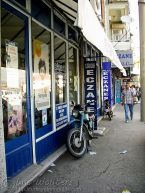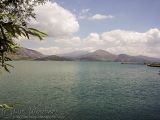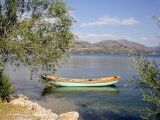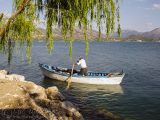Eğirdir (original) (raw)
North of Antalya and south of Afyon lies Turkey's Lake District with three significantly large lakes: Lake Burdur, Lake Eğirdir, and Lake Beyşehir, along with many smaller ones. The main town in the area is Isparta famous for its rose oil, but the most interesting is Egirdir at the southern shore of the astonishingly beautiful Lake Egirdir (Eğirdir Gölü), the second-largest freshwater lake in Turkey.
History of Egirdir
Eğirdir was originally founded by the Hittites and became a regular stop on the King's Way, an important trade route between Ephesus and Babylon, famous for its recreational and accommodation facilities. In Byzantine times the place was known as Akrotiri meaning steep mountain in Greek. Under the Ottoman rule, Akrotiri became transformed to Eğridir, which means bent or crooked in Turkish. In the mid-1980s the name was changed again to Eğirdir which means she is spinning.
Sights and Photos of Egirdir
The most prominent historical building at Eğirdir is certainly the Hızır Bey Camii, a Seljuk construction originally built as a warehouse in 1237, but restored as a mosque by Hızır Bey, a Hamidoğullari emir. Facing the mosque is the Dündar Bey Medresesi, a theological school built by the Seljuk Sultan Keykubat originally as a caravanserai in 1218. Felekeddin Dündar Bey, the founder of the Beylik of the Hamidoğlu, converted it into a medrese in 1285. The medrese was restored in 1979 and is now filled with shops.
The area of Isparta is famous for the culture of roses and is one of the world's leading producer of attar of roses, a valuable oil extracted by steam distillation from rose petals and used in perfumes and cosmetics.
Here are the photos of Egirdir, click on the thumbnails to see greater pictures.
The town of Eğirdir stretches for several kilometres along the lake. Opposite the town centre, a causeway connects two tiny islands with one another and with the mainland. On the approach to the causeway, the massive walls of Kale, the crumbling Byzantine-Seljuk fortress with foundations from 400 BC, rise above the beach. Canada (pronounced Janada and meaning Life Island) is the name of the first and smallest of the two islands. The second island is named Yeşilada or Green Island and was until 1923 home of a Greek community living in beautiful stone and timber houses. Today the restored 12th-century Byzantine church of Agios Stephanos (Ayastefanos in Turkish) is a remnant to this Greek past.
I visited Egirdir on several occasions and enjoyed the place each time. The lakeside town, especially Yeşilada, is a relaxing place to stay and a convenient base to explore the many natural and historic sites of the Eğirdir region.
Here are the other photos, click on the thumbnails to see greater pictures.
Travel Information & Travel Tips
Both in 2004 and 2010, we stayed at Otel Apostel, Atayolu No. 7 (Tel. +90 (0) 246 311 54 51 - 52, Fax +90 (0) 246 312 35 33) conveniently located in the centre of town, near the bus station.
Yeşilada counts many fine restaurants. Melodi Restaurant at the tip of the island is said to be the best and, to my experience, the grilled fish is delicious. I did confirm this during my 2010 visit to Egirdir.
A local speciality of Egirdir is the crayfish, known as kerevit or ıstakoz, a gastronomic feast. The crayfish of Lake Egirdir is known as one of the best quality freshwater lobsters in the world and untıl the mid-1980's Egirdir yielded the highest crayfish catch in Turkey. Overfishing, water pollution, and finally a lethal fungal disease caused the population to collapse and almost become extinct. Drastic measures were taken by the government and in recent years the population of crayfish has been growing again. There is a ban on fishing in the lake between mid-March and mid-June, so catches served during this period are likely to come from the freezer.





























